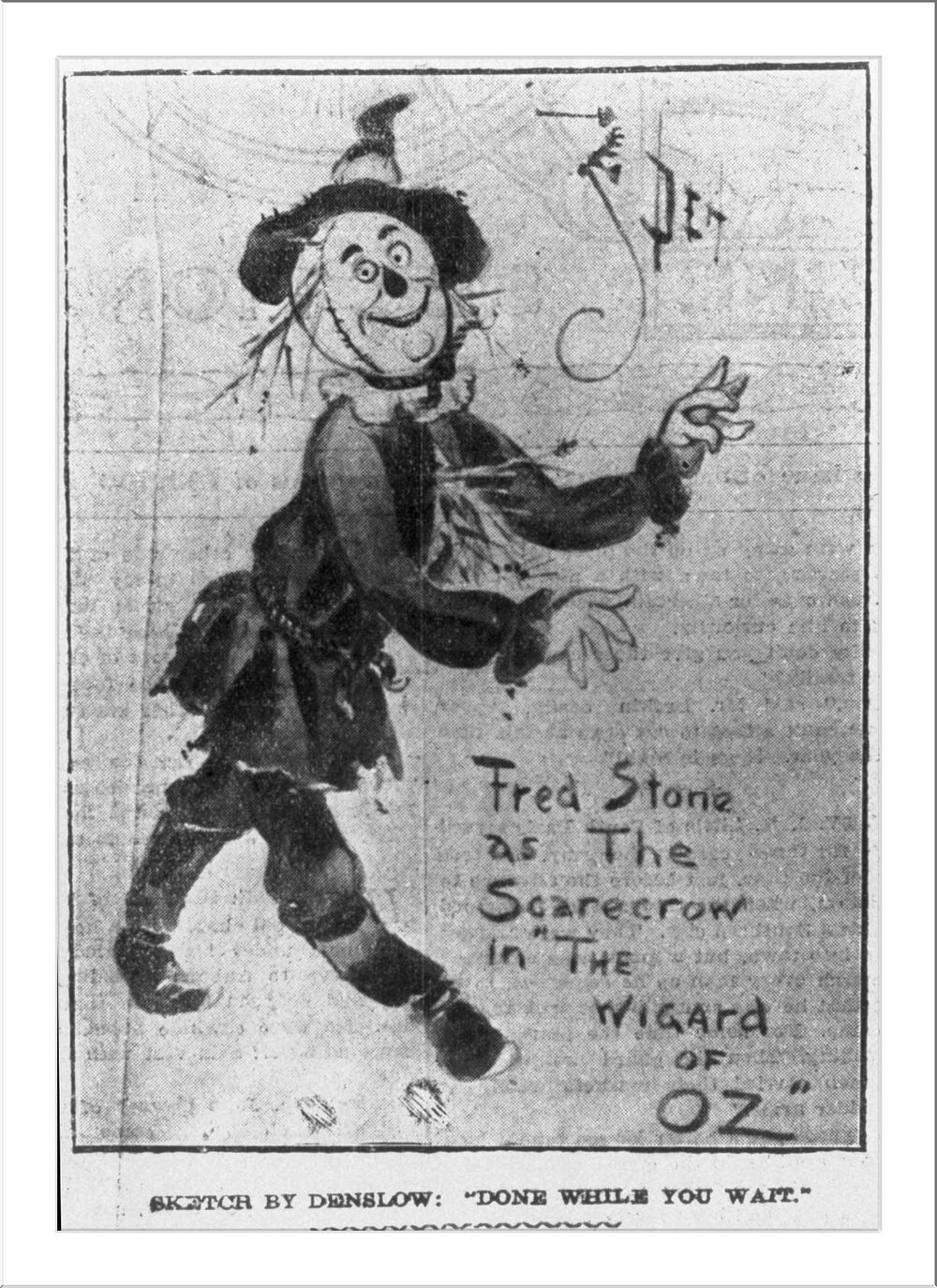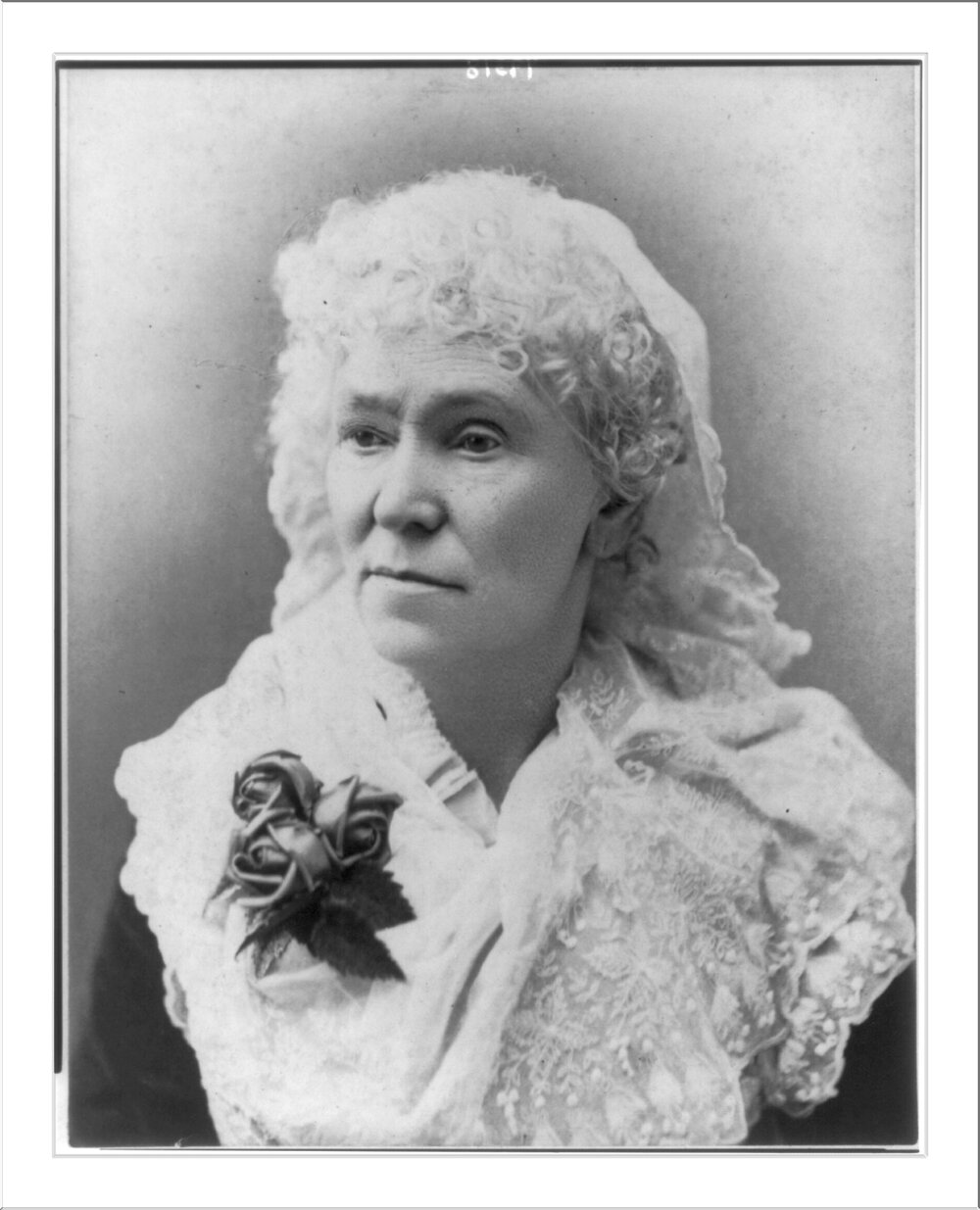The Wizard of Oz, L. Frank Baum, And Matilda Joslyn Gage
Posted by Gunnar Rice on May 5th 2020
The name of L. Frank Baum may not carry instant recognition, but his best-known creations, Dorothy, the Scarecrow, the Tin Woodman, the Cowardly Lion, and the Wizard of Oz, are American cultural icons.
Baum created them as characters in his book The Wonderful Wizard of Oz, first published in 1900. In part thanks to a musical stage version that helped publicize it, that first edition sold out quickly, with some credit also going to illustrator W. W. Denslow. Soon many children wrote Baum letters, begging him for more stories about Oz. He complied, writing a total of 13 sequels, all illustrated by John R. Neill.
The story also spawned many descendants. The best known of these is probably still the 1939 movie with Judy Garland, Ray Bolger, Jack Haley, and Bert Lahr. In 1974, The Wiz, a hip, urban stage musical debuted, further extending the story's appeal. More recently, Gregory Maguire's 1995 novel focusing on the witches of Oz, Wicked, became a Broadway musical in 2003.
Before his sudden fame, Baum's life had followed an indirect path to writing success. Born in 1856 to a wealthy family in Chittenango, NY, a small Erie canal town, he grew up on his father's estate. He had wide-ranging interests: stamp collecting, poultry breeding, and especially acting, theater management, and play writing. He also briefly owned a store, was a traveling salesman, and edited one newspaper, later reporting for another. Most of these enterprises met with limited success. But in 1897, he wrote a prose version of Mother Goose, and in 1898, Father Goose, His Book, a collection of nonsense poetry, appeared. These books jumpstarted his career writing for children. By the time he died in 1919, Baum had published a number of other children's books in addition to the Oz series.
He was encouraged in his writing by his strong-minded suffragist mother-in-law, Matilda Joslyn Gage. An abolitionist and supporter of better treatment for Native Americans, Gage had collaborated with Susan B. Anthony and Elizabeth Cady Stanton to found the National Woman Suffrage Association. Well-educated, she wrote prolifically on a variety of subjects. Resistant at first to Baum as a suitor for her daughter Maud because of his poor career prospects as an actor, Gage soon came to appreciate him. She enjoyed his whimsical storytelling and urged him to publish his yarns. She also seems to have influenced some details in the Oz books, such as the emphasis on powerful female leaders, most of whom are kind and enlightened. And aside from the occasional outlying power-hungry antagonist, life in Oz is generally utopian, with its egalitarian respect for difference and comfort for all. Given the family's closeness, Baum probably found inspiration for some of these details in Gage's views.
Yet the books wear any messages lightly. Over the years, some scholars have seen political implications in the events, characters, or even illustrations. But these adventure stories are overwhelmingly just fun. Baum's artful whimsy in bringing Oz to life means that most real life matters are transcended — and solutions to problems are often delightful: Dorothy is able to assuage her hunger during one trek by picking a boxed lunch from among many growing on a tree.
Today, the original Oz books are not well known. But the basic characters are still popular, and Wicked's Broadway run continues. Baum's legacy is alive in central New York: Chittenango celebrates Oz year around with its yellow brick road sidewalk and annually with Oz Stravaganza, a two-day event complete with parade and costume contest. Eight miles away in Fayetteville, Matilda Joslyn Gage's home is open to the public; the Family Parlor, or Oz room, honors Baum and his imaginative achievement
.
Fred Hamlin's Musical





